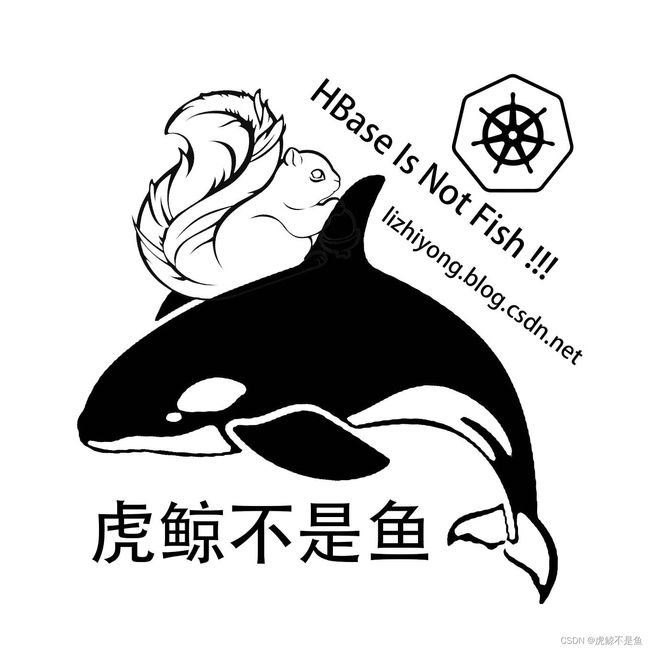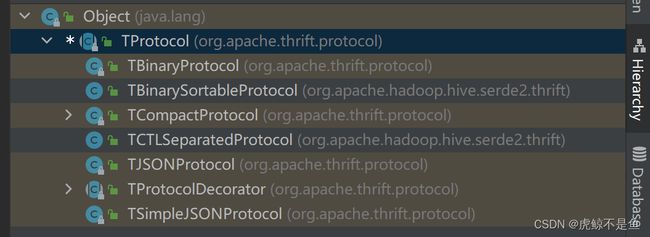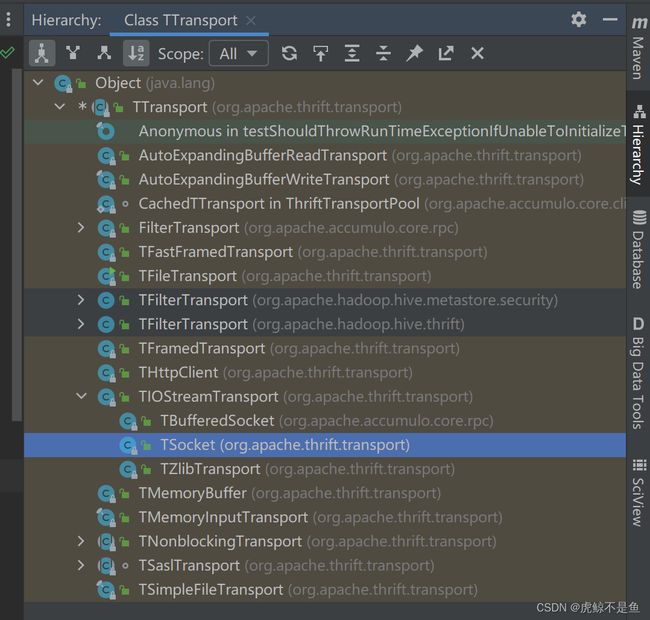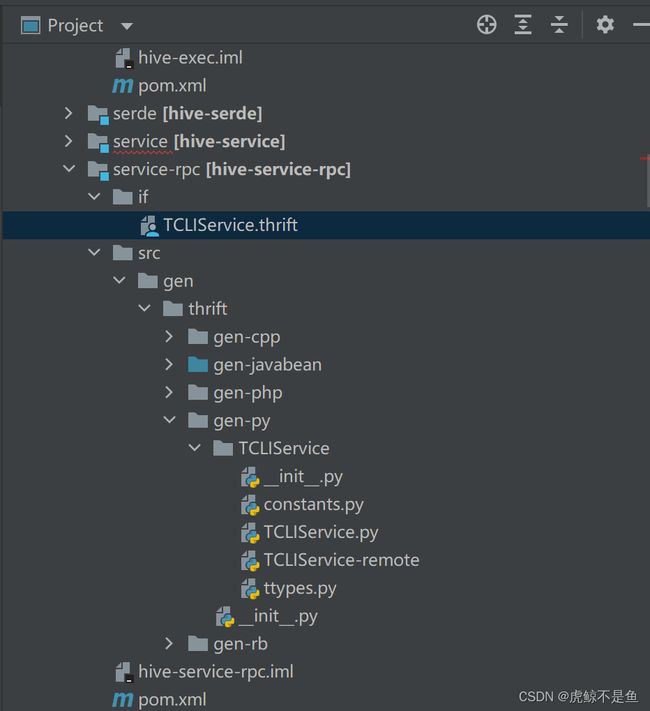从Hive源码解读大数据开发为什么可以脱离SQL、Java、Scala
从Hive源码解读大数据开发为什么可以脱离SQL、Java、Scala
前言
【本文适合有一定计算机基础/半年工作经验的读者食用。立个Flg,愿天下不再有肤浅的SQL Boy】
谈到大数据开发,占据绝大多数人口的就是SQL Boy,不接受反驳,毕竟大数据主要就是为机器学习和统计报表服务的,自然从Oracle数据库开发转过来并且还是只会写几句SQL的人不在少数,个别会Python写个spark.sql(“一个sql字符串”)的已经是SQL Boy中的人才。这种只能处理结构化表的最基础的大数据开发人员,就是我们常提到的梗:肤浅的SQL Boy。。。对大数据完全不懂,思想还停留在数据库时代,大数据组件也都是拿来当RDBMS来用。。。这种业务开发人员的技术水平其实不敢恭维。
还有从Java后端开发转过来的,虽然不适应,但还是可以一个Main方法流畅地操作Spark、Flink,手写个JDBC,做点简单的二开,这种就是平台开发人员,技术水平要更高一些。Java写得好,Scala其实上手也快。
但是。。。这并不代表做大数据只能用SQL/Java/Scala。。。这么局限的话,也不比SQL Boy强到哪里去。
笔者最早还搞过嵌入式开发,自然明白C/C#/C++也可以搞大数据。。。
本文将以大数据开发中最常见的数仓组件Hive的drop table为例,抛砖引玉,解读为神马大数据开发可以脱离SQL、Java、Scala。
为神马可以脱离SQL
数据不外乎结构化数据和非结构化数据,SQL只能处理极其有限的结构化表【RDBMS、整齐的csv/tsv等】,绝大多数的半结构化、非结构化数据SQL是无能为力的【log日志文件、音图等】。古代的MapReduce本身就不可以用SQL,Spark和Flink老版本都是基于API的,没有SQL的年代大家也活得好好的。大数据组件对SQL的支持日渐友好都是后来的事情,主要是为了降低门槛,让SQL Boy也可以用上大数据技术。
肤浅的SQL Boy们当然只知道:
drop table db_name.tb_name;
正常情况这个Hive表就会被drop掉,认知也就局限于Hive是个数据库。
但是大数据平台开发知道去翻看Hive的Java API:
https://svn.apache.org/repos/infra/websites/production/hive/content/javadocs/r3.1.3/api/index.html
知道还有这种方式:
package com.zhiyong;
import org.apache.hadoop.hive.conf.HiveConf;
import org.apache.hadoop.hive.metastore.HiveMetaStoreClient;
/**
* @program: zhiyong_study
* @description: 测试MetaStore
* @author: zhiyong
* @create: 2023-03-22 22:57
**/
public class MetaStoreDemo {
public static void main(String[] args) throws Exception{
HiveConf hiveConf = new HiveConf();
HiveMetaStoreClient client = new HiveMetaStoreClient(hiveConf);
client.dropTable("db_name","tb_name");
}
}
通过调用API的方式,同样可以drop掉表。显然不一定要用DDL。通过HiveMetaStoreClient的方式,还可以create建表等操作。
懂大数据底层的平台开发当然还有更狠的方式:直接连Hive存元数据的MySQL,对元数据表的数据做精准crud。。。
对结构化表的ETL或者其它的运算处理完全可以用Spark的DataFrame、Flink的DataStream编程,纯API方式实现,SQL能实现的Java和Scala都能实现,至于SQL实现不了的Java和Scala也能实现。。。
笔者实在是想不到除了RDBMS和各类包皮产品【在开源的Apache组件基础上做一些封装】,还有哪些场景是只能用SQL的。。。
至此,可以说明大数据可以脱离SQL。
为神马可以脱离Java
虽然Hive底层是Java写的,但是这并不意味着只能用Java操作Hive。认知这么肤浅的话,也就活该一辈子调参调API了。。。
找到dropTable的实际入口
从Hive3.1.2源码,可以找到dropTable方法:
@Override
public void dropTable(String dbname, String name, boolean deleteData,
boolean ignoreUnknownTab) throws MetaException, TException,
NoSuchObjectException, UnsupportedOperationException {
dropTable(getDefaultCatalog(conf), dbname, name, deleteData, ignoreUnknownTab, null);
}
@Override
public void dropTable(String dbname, String name, boolean deleteData,
boolean ignoreUnknownTab, boolean ifPurge) throws TException {
dropTable(getDefaultCatalog(conf), dbname, name, deleteData, ignoreUnknownTab, ifPurge);
}
@Override
public void dropTable(String dbname, String name) throws TException {
dropTable(getDefaultCatalog(conf), dbname, name, true, true, null);
}
@Override
public void dropTable(String catName, String dbName, String tableName, boolean deleteData,
boolean ignoreUnknownTable, boolean ifPurge) throws TException {
//build new environmentContext with ifPurge;
EnvironmentContext envContext = null;
if(ifPurge){
Map<String, String> warehouseOptions;
warehouseOptions = new HashMap<>();
warehouseOptions.put("ifPurge", "TRUE");
envContext = new EnvironmentContext(warehouseOptions);
}
dropTable(catName, dbName, tableName, deleteData, ignoreUnknownTable, envContext);
}
虽然有多个同名方法,但是底层调用的还是同一个方法:
/**
* Drop the table and choose whether to: delete the underlying table data;
* throw if the table doesn't exist; save the data in the trash.
*
* @param catName catalog name
* @param dbname database name
* @param name table name
* @param deleteData
* delete the underlying data or just delete the table in metadata
* @param ignoreUnknownTab
* don't throw if the requested table doesn't exist
* @param envContext
* for communicating with thrift
* @throws MetaException
* could not drop table properly
* @throws NoSuchObjectException
* the table wasn't found
* @throws TException
* a thrift communication error occurred
* @throws UnsupportedOperationException
* dropping an index table is not allowed
* @see org.apache.hadoop.hive.metastore.api.ThriftHiveMetastore.Iface#drop_table(java.lang.String,
* java.lang.String, boolean)
*/
public void dropTable(String catName, String dbname, String name, boolean deleteData,
boolean ignoreUnknownTab, EnvironmentContext envContext) throws MetaException, TException,
NoSuchObjectException, UnsupportedOperationException {
Table tbl;
try {
tbl = getTable(catName, dbname, name);
} catch (NoSuchObjectException e) {
if (!ignoreUnknownTab) {
throw e;
}
return;
}
HiveMetaHook hook = getHook(tbl);
if (hook != null) {
hook.preDropTable(tbl);
}
boolean success = false;
try {
drop_table_with_environment_context(catName, dbname, name, deleteData, envContext);
if (hook != null) {
hook.commitDropTable(tbl, deleteData || (envContext != null && "TRUE".equals(envContext.getProperties().get("ifPurge"))));
}
success=true;
} catch (NoSuchObjectException e) {
if (!ignoreUnknownTab) {
throw e;
}
} finally {
if (!success && (hook != null)) {
hook.rollbackDropTable(tbl);
}
}
}
主要就是获取了表对象,然后做了preDropTable预提交和commitDropTable实际的提交。这种2PC方式表面上还是很严谨。。。
可以发现HiveMetaHook这其实是个接口:
package org.apache.hadoop.hive.metastore;
/**
* HiveMetaHook defines notification methods which are invoked as part
* of transactions against the metastore, allowing external catalogs
* such as HBase to be kept in sync with Hive's metastore.
*
*
*
* Implementations can use {@link MetaStoreUtils#isExternalTable} to
* distinguish external tables from managed tables.
*/
@InterfaceAudience.Public
@InterfaceStability.Stable
public interface HiveMetaHook {
public String ALTER_TABLE_OPERATION_TYPE = "alterTableOpType";
public List<String> allowedAlterTypes = ImmutableList.of("ADDPROPS", "DROPPROPS");
/**
* Called before a table definition is removed from the metastore
* during DROP TABLE.
*
* @param table table definition
*/
public void preDropTable(Table table)
throws MetaException;
/**
* Called after failure removing a table definition from the metastore
* during DROP TABLE.
*
* @param table table definition
*/
public void rollbackDropTable(Table table)
throws MetaException;
/**
* Called after successfully removing a table definition from the metastore
* during DROP TABLE.
*
* @param table table definition
*
* @param deleteData whether to delete data as well; this should typically
* be ignored in the case of an external table
*/
public void commitDropTable(Table table, boolean deleteData)
throws MetaException;
}
继承关系:
显然不是这个:
package org.apache.hadoop.hive.metastore;
public abstract class DefaultHiveMetaHook implements HiveMetaHook {
/**
* Called after successfully INSERT [OVERWRITE] statement is executed.
* @param table table definition
* @param overwrite true if it is INSERT OVERWRITE
*
* @throws MetaException
*/
public abstract void commitInsertTable(Table table, boolean overwrite) throws MetaException;
/**
* called before commit insert method is called
* @param table table definition
* @param overwrite true if it is INSERT OVERWRITE
*
* @throws MetaException
*/
public abstract void preInsertTable(Table table, boolean overwrite) throws MetaException;
/**
* called in case pre commit or commit insert fail.
* @param table table definition
* @param overwrite true if it is INSERT OVERWRITE
*
* @throws MetaException
*/
public abstract void rollbackInsertTable(Table table, boolean overwrite) throws MetaException;
}
更不可能是这个test的Mock类:
/**
* Mock class used for unit testing.
* {@link org.apache.hadoop.hive.ql.lockmgr.TestDbTxnManager2#testLockingOnInsertIntoNonNativeTables()}
*/
public class StorageHandlerMock extends DefaultStorageHandler {
}
所以是AccumuloStorageHandler这个类:
package org.apache.hadoop.hive.accumulo;
/**
* Create table mapping to Accumulo for Hive. Handle predicate pushdown if necessary.
*/
public class AccumuloStorageHandler extends DefaultStorageHandler implements HiveMetaHook,
HiveStoragePredicateHandler {
}
但是:
@Override
public void preDropTable(Table table) throws MetaException {
// do nothing
}
这个do nothing!!!一言难尽。这种2PC方式表面上确实很严谨。。。
所以dropTable的入口是:
@Override
public void commitDropTable(Table table, boolean deleteData) throws MetaException {
String tblName = getTableName(table);
if (!isExternalTable(table)) {
try {
if (deleteData) {
TableOperations tblOpts = connectionParams.getConnector().tableOperations();
if (tblOpts.exists(tblName)) {
tblOpts.delete(tblName);
}
}
} catch (AccumuloException e) {
throw new MetaException(StringUtils.stringifyException(e));
} catch (AccumuloSecurityException e) {
throw new MetaException(StringUtils.stringifyException(e));
} catch (TableNotFoundException e) {
throw new MetaException(StringUtils.stringifyException(e));
}
}
}
按照最简单的内部表、需要删数据来看,实际上调用的是这个delete方法。而TableOperations又是个接口:
package org.apache.accumulo.core.client.admin;
/**
* Provides a class for administering tables
*
*/
public interface TableOperations {
/**
* Delete a table
*
* @param tableName
* the name of the table
* @throws AccumuloException
* if a general error occurs
* @throws AccumuloSecurityException
* if the user does not have permission
* @throws TableNotFoundException
* if the table does not exist
*/
void delete(String tableName) throws AccumuloException, AccumuloSecurityException, TableNotFoundException;
}
继承关系简单:
当然就是这个实现类:
package org.apache.accumulo.core.client.impl;
public class TableOperationsImpl extends TableOperationsHelper {
@Override
public void delete(String tableName) throws AccumuloException, AccumuloSecurityException, TableNotFoundException {
checkArgument(tableName != null, "tableName is null");
List<ByteBuffer> args = Arrays.asList(ByteBuffer.wrap(tableName.getBytes(UTF_8)));
Map<String,String> opts = new HashMap<>();
try {
doTableFateOperation(tableName, TableNotFoundException.class, FateOperation.TABLE_DELETE, args, opts);
} catch (TableExistsException e) {
// should not happen
throw new AssertionError(e);
}
}
}
所以实际入口是这里的doTableFateOperation方法。枚举体的FateOperation.TABLE_DELETE=2。
找到doTableFateOperation方法的调用栈
跳转到:
private void doTableFateOperation(String tableOrNamespaceName, Class<? extends Exception> namespaceNotFoundExceptionClass, FateOperation op,
List<ByteBuffer> args, Map<String,String> opts) throws AccumuloSecurityException, AccumuloException, TableExistsException, TableNotFoundException {
try {
doFateOperation(op, args, opts, tableOrNamespaceName);
}
}
继续跳转:
String doFateOperation(FateOperation op, List<ByteBuffer> args, Map<String,String> opts, String tableOrNamespaceName) throws AccumuloSecurityException,
TableExistsException, TableNotFoundException, AccumuloException, NamespaceExistsException, NamespaceNotFoundException {
return doFateOperation(op, args, opts, tableOrNamespaceName, true);
}
继续跳转:
String doFateOperation(FateOperation op, List<ByteBuffer> args, Map<String,String> opts, String tableOrNamespaceName, boolean wait)
throws AccumuloSecurityException, TableExistsException, TableNotFoundException, AccumuloException, NamespaceExistsException, NamespaceNotFoundException {
Long opid = null;
try {
opid = beginFateOperation();
executeFateOperation(opid, op, args, opts, !wait);
if (!wait) {
opid = null;
return null;
}
String ret = waitForFateOperation(opid);
return ret;
} catch (ThriftSecurityException e) {
switch (e.getCode()) {
case TABLE_DOESNT_EXIST:
throw new TableNotFoundException(null, tableOrNamespaceName, "Target table does not exist");
case NAMESPACE_DOESNT_EXIST:
throw new NamespaceNotFoundException(null, tableOrNamespaceName, "Target namespace does not exist");
default:
String tableInfo = Tables.getPrintableTableInfoFromName(context.getInstance(), tableOrNamespaceName);
throw new AccumuloSecurityException(e.user, e.code, tableInfo, e);
}
} catch (ThriftTableOperationException e) {
switch (e.getType()) {
case EXISTS:
throw new TableExistsException(e);
case NOTFOUND:
throw new TableNotFoundException(e);
case NAMESPACE_EXISTS:
throw new NamespaceExistsException(e);
case NAMESPACE_NOTFOUND:
throw new NamespaceNotFoundException(e);
case OFFLINE:
throw new TableOfflineException(context.getInstance(), Tables.getTableId(context.getInstance(), tableOrNamespaceName));
default:
throw new AccumuloException(e.description, e);
}
} catch (Exception e) {
throw new AccumuloException(e.getMessage(), e);
} finally {
Tables.clearCache(context.getInstance());
// always finish table op, even when exception
if (opid != null)
try {
finishFateOperation(opid);
} catch (Exception e) {
log.warn(e.getMessage(), e);
}
}
}
在这里可以发现一些奇怪的现象,居然catch了好多Thrift相关的Exception。继续跳转:
// This method is for retrying in the case of network failures; anything else it passes to the caller to deal with
private void executeFateOperation(long opid, FateOperation op, List<ByteBuffer> args, Map<String,String> opts, boolean autoCleanUp)
throws ThriftSecurityException, TException, ThriftTableOperationException {
while (true) {
MasterClientService.Iface client = null;
try {
client = MasterClient.getConnectionWithRetry(context);
client.executeFateOperation(Tracer.traceInfo(), context.rpcCreds(), opid, op, args, opts, autoCleanUp);
break;
} catch (TTransportException tte) {
log.debug("Failed to call executeFateOperation(), retrying ... ", tte);
UtilWaitThread.sleep(100);
} finally {
MasterClient.close(client);
}
}
}
这个死循环里获取了Client对象。但是这个Client一看就没那么简单。。。调用的executeFateOperation方法还不能直接Idea点开,需要手动定位。
分析client对象
package org.apache.accumulo.core.client.impl;
import com.google.common.net.HostAndPort;
public class MasterClient {
private static final Logger log = LoggerFactory.getLogger(MasterClient.class);
public static MasterClientService.Client getConnectionWithRetry(ClientContext context) {
while (true) {
MasterClientService.Client result = getConnection(context);
if (result != null)
return result;
UtilWaitThread.sleep(250);
}
}
}
实际上又是这个:
public static class Client extends FateService.Client implements Iface {
}
所以其父类是:
package org.apache.accumulo.core.master.thrift;
@SuppressWarnings({"unchecked", "serial", "rawtypes", "unused"}) public class FateService {
public interface Iface {
public void executeFateOperation(org.apache.accumulo.core.trace.thrift.TInfo tinfo, org.apache.accumulo.core.security.thrift.TCredentials credentials, long opid, FateOperation op, List<ByteBuffer> arguments, Map<String,String> options, boolean autoClean) throws org.apache.accumulo.core.client.impl.thrift.ThriftSecurityException, org.apache.accumulo.core.client.impl.thrift.ThriftTableOperationException, org.apache.thrift.TException;
}
public void executeFateOperation(org.apache.accumulo.core.trace.thrift.TInfo tinfo, org.apache.accumulo.core.security.thrift.TCredentials credentials, long opid, FateOperation op, List<ByteBuffer> arguments, Map<String,String> options, boolean autoClean) throws org.apache.accumulo.core.client.impl.thrift.ThriftSecurityException, org.apache.accumulo.core.client.impl.thrift.ThriftTableOperationException, org.apache.thrift.TException
{
send_executeFateOperation(tinfo, credentials, opid, op, arguments, options, autoClean);
recv_executeFateOperation();
}
public static class Client extends org.apache.thrift.TServiceClient implements Iface {
}
}
所以这种client对象才可以执行executeFateOperation方法。
查看executeFateOperation方法
分为2步,字面意思send_executeFateOperation方法发送了啥,recv_executeFateOperation方法又接收了啥。显然发送消息是需要重点关心的:
public void send_executeFateOperation(org.apache.accumulo.core.trace.thrift.TInfo tinfo, org.apache.accumulo.core.security.thrift.TCredentials credentials, long opid, FateOperation op, List<ByteBuffer> arguments, Map<String,String> options, boolean autoClean) throws org.apache.thrift.TException
{
executeFateOperation_args args = new executeFateOperation_args();
args.setTinfo(tinfo);
args.setCredentials(credentials);
args.setOpid(opid);
args.setOp(op);
args.setArguments(arguments);
args.setOptions(options);
args.setAutoClean(autoClean);
sendBase("executeFateOperation", args);
}
这个发送的方法把入参的表名、操作类型【Drop表】设置为sendBase方法的入参。
package org.apache.thrift;
/**
* A TServiceClient is used to communicate with a TService implementation
* across protocols and transports.
*/
public abstract class TServiceClient {
protected void sendBase(String methodName, TBase<?,?> args) throws TException {
sendBase(methodName, args, TMessageType.CALL);
}
private void sendBase(String methodName, TBase<?,?> args, byte type) throws TException {
oprot_.writeMessageBegin(new TMessage(methodName, type, ++seqid_));
args.write(oprot_);
oprot_.writeMessageEnd();
oprot_.getTransport().flush();
}
}
其中:
package org.apache.thrift.protocol;
/**
* Message type constants in the Thrift protocol.
*
*/
public final class TMessageType {
public static final byte CALL = 1;
public static final byte REPLY = 2;
public static final byte EXCEPTION = 3;
public static final byte ONEWAY = 4;
}
这个type传入的其实是1。用于构造方法:
package org.apache.thrift.protocol;
/**
* Helper class that encapsulates struct metadata.
*
*/
public final class TMessage {
public TMessage(String n, byte t, int s) {
name = n;
type = t;
seqid = s;
}
public final String name;
public final byte type;
public final int seqid;
}
另一个泛型TBase:
package org.apache.thrift;
import java.io.Serializable;
import org.apache.thrift.protocol.TProtocol;
/**
* Generic base interface for generated Thrift objects.
*
*/
public interface TBase<T extends TBase<?,?>, F extends TFieldIdEnum> extends Comparable<T>, Serializable {
/**
* Reads the TObject from the given input protocol.
*
* @param iprot Input protocol
*/
public void read(TProtocol iprot) throws TException;
/**
* Writes the objects out to the protocol
*
* @param oprot Output protocol
*/
public void write(TProtocol oprot) throws TException;
}
按照注释可以知道write方法是把Java的对象输出给协议。
而executeFateOperation_args类:
public static class executeFateOperation_args implements org.apache.thrift.TBase<executeFateOperation_args, executeFateOperation_args._Fields>, java.io.Serializable, Cloneable, Comparable<executeFateOperation_args> {
public void write(org.apache.thrift.protocol.TProtocol oprot) throws org.apache.thrift.TException {
schemes.get(oprot.getScheme()).getScheme().write(oprot, this);
}
}
它的write方法:
package org.apache.thrift.scheme;
import org.apache.thrift.TBase;
public interface IScheme<T extends TBase> {
public void read(org.apache.thrift.protocol.TProtocol iproto, T struct) throws org.apache.thrift.TException;
public void write(org.apache.thrift.protocol.TProtocol oproto, T struct) throws org.apache.thrift.TException;
}
又是跳转到接口。。。
可以看到有2大抽象类。
而getScheme拿到的:
package org.apache.thrift.protocol;
import java.nio.ByteBuffer;
import org.apache.thrift.TException;
import org.apache.thrift.scheme.IScheme;
import org.apache.thrift.scheme.StandardScheme;
import org.apache.thrift.transport.TTransport;
/**
* Protocol interface definition.
*
*/
public abstract class TProtocol {
public Class<? extends IScheme> getScheme() {
return StandardScheme.class;
}
public abstract void writeMessageBegin(TMessage message) throws TException;
}
显然get到的是StandardScheme类。而writeMessageBegin又是这个抽象类的抽象方法。
该抽象类的继承关系:
至此可以知道原生支持的协议有这些。最常用的当然就是二进制协议:TBinaryProtocol。
查看TBinaryProtocol二进制协议
package org.apache.thrift.protocol;
import java.io.UnsupportedEncodingException;
import java.nio.ByteBuffer;
import org.apache.thrift.TException;
import org.apache.thrift.transport.TTransport;
/**
* Binary protocol implementation for thrift.
*
*/
public class TBinaryProtocol extends TProtocol {
public void writeMessageBegin(TMessage message) throws TException {
if (strictWrite_) {
int version = VERSION_1 | message.type;
writeI32(version);
writeString(message.name);
writeI32(message.seqid);
} else {
writeString(message.name);
writeByte(message.type);
writeI32(message.seqid);
}
}
}
可以看出writeMessageBegin方法就是实际的写数据操作,把消息拆分后写出。
public void writeString(String str) throws TException {
try {
byte[] dat = str.getBytes("UTF-8");
writeI32(dat.length);
trans_.write(dat, 0, dat.length);
} catch (UnsupportedEncodingException uex) {
throw new TException("JVM DOES NOT SUPPORT UTF-8");
}
}
以此为例。会去把数据作为字节数组写出:
package org.apache.thrift.transport;
import java.io.Closeable;
/**
* Generic class that encapsulates the I/O layer. This is basically a thin
* wrapper around the combined functionality of Java input/output streams.
*
*/
public abstract class TTransport implements Closeable {
/**
* Reads up to len bytes into buffer buf, starting at offset off.
*
* @param buf Array to read into
* @param off Index to start reading at
* @param len Maximum number of bytes to read
* @return The number of bytes actually read
* @throws TTransportException if there was an error reading data
*/
public abstract int read(byte[] buf, int off, int len)
throws TTransportException;
/**
* Writes up to len bytes from the buffer.
*
* @param buf The output data buffer
* @param off The offset to start writing from
* @param len The number of bytes to write
* @throws TTransportException if there was an error writing data
*/
public abstract void write(byte[] buf, int off, int len)
throws TTransportException;
}
这才是真正的传输对象。其继承关系:
搞过嵌入式开发的一定很熟悉这个Socket!!!就是IP+port的那个Socket。应用层与TCP/IP传输层间的抽象层。。。
查看TIOStreamTransport传输类
package org.apache.thrift.transport;
/**
* This is the most commonly used base transport. It takes an InputStream
* and an OutputStream and uses those to perform all transport operations.
* This allows for compatibility with all the nice constructs Java already
* has to provide a variety of types of streams.
*
*/
public class TIOStreamTransport extends TTransport {
public int read(byte[] buf, int off, int len) throws TTransportException {
if (inputStream_ == null) {
throw new TTransportException(TTransportException.NOT_OPEN, "Cannot read from null inputStream");
}
int bytesRead;
try {
bytesRead = inputStream_.read(buf, off, len);
} catch (IOException iox) {
throw new TTransportException(TTransportException.UNKNOWN, iox);
}
if (bytesRead < 0) {
throw new TTransportException(TTransportException.END_OF_FILE);
}
return bytesRead;
}
/**
* Writes to the underlying output stream if not null.
*/
public void write(byte[] buf, int off, int len) throws TTransportException {
if (outputStream_ == null) {
throw new TTransportException(TTransportException.NOT_OPEN, "Cannot write to null outputStream");
}
try {
outputStream_.write(buf, off, len);
} catch (IOException iox) {
throw new TTransportException(TTransportException.UNKNOWN, iox);
}
}
/**
* Flushes the underlying output stream if not null.
*/
public void flush() throws TTransportException {
if (outputStream_ == null) {
throw new TTransportException(TTransportException.NOT_OPEN, "Cannot flush null outputStream");
}
try {
outputStream_.flush();
} catch (IOException iox) {
throw new TTransportException(TTransportException.UNKNOWN, iox);
}
}
}
其子类TSocket重写了IP、Port和init等。
小结Drop表的流程
至此可以得知Java用API操作Hive的原理,大致是这样:
顶层API【dropTable】→表操作实现类【TableOperationsImpl】的删表方法【doTableFateOperation】
→executeFateOperation方法→Client类的实例对象的executeFateOperation方法
→sendBase方法→executeFateOperation_args静态类的实例对象的write方法输出数据给传输协议TProtocol
→传输协议类的write方法具体把数据写出给Thrift的Server
→Thrift的Server接收到消息后执行对应的操作
最出名的Thrift当然是Hive自己的Hive Server【Standalone】和Hive Server2,还有Spark的Thrift Server,借助它们,可以用JDBC或者Cli的方式去操作Hive。
但是!!!Thrift的初衷就是实现语言无关,毕竟底层只需要能把数据传输到位即可,数据传输并不是Java的特权。
其它语言的Thrift
在service-rpc这个路径下,可以发现有cpp、Java、php、py,rb的包!!!
Hive的官方文档写的很明白:
https://cwiki.apache.org/confluence/display/Hive/HiveClient#HiveClient-ThriftJavaClient
The command line client currently only supports an embedded server. The JDBC and Thrift-Java clients support both embedded and standalone servers. Clients in other languages only support standalone servers.
命令行模式目前只能用于嵌入式服务,JDBC和Thrift-Java的Client可以支持嵌入式和独立部署的服务。别的语言的Client只支持在独立部署的服务使用。
Connection con = DriverManager.getConnection("jdbc:hive://localhost:10000/default", "", "");
Statement stmt = con.createStatement();
这种古代的Hive Server就是嵌入模式。。。
Connection con = DriverManager.getConnection("jdbc:hive2://localhost:10000/default", "", "");
这种Hive Server2就是独立部署模式。
官方还给出了python的案例:
#!/usr/bin/env python
import sys
from hive import ThriftHive
from hive.ttypes import HiveServerException
from thrift import Thrift
from thrift.transport import TSocket
from thrift.transport import TTransport
from thrift.protocol import TBinaryProtocol
try:
transport = TSocket.TSocket('localhost', 10000)
transport = TTransport.TBufferedTransport(transport)
protocol = TBinaryProtocol.TBinaryProtocol(transport)
client = ThriftHive.Client(protocol)
transport.open()
client.execute("CREATE TABLE r(a STRING, b INT, c DOUBLE)")
client.execute("LOAD TABLE LOCAL INPATH '/path' INTO TABLE r")
client.execute("SELECT * FROM r")
while (1):
row = client.fetchOne()
if (row == None):
break
print row
client.execute("SELECT * FROM r")
print client.fetchAll()
transport.close()
except Thrift.TException, tx:
print '%s' % (tx.message)
以及PHP的案例:
// set THRIFT_ROOT to php directory of the hive distribution
$GLOBALS['THRIFT_ROOT'] = '/lib/php/';
// load the required files for connecting to Hive
require_once $GLOBALS['THRIFT_ROOT'] . 'packages/hive_service/ThriftHive.php';
require_once $GLOBALS['THRIFT_ROOT'] . 'transport/TSocket.php';
require_once $GLOBALS['THRIFT_ROOT'] . 'protocol/TBinaryProtocol.php';
// Set up the transport/protocol/client
$transport = new TSocket('localhost', 10000);
$protocol = new TBinaryProtocol($transport);
$client = new ThriftHiveClient($protocol);
$transport->open();
// run queries, metadata calls etc
$client->execute('SELECT * from src');
var_dump($client->fetchAll());
$transport->close();
Ruby好歹也给了个参考: https://github.com/forward3d/rbhive
至于Java、C++就不给Client的案例了。。。也是很容易理解。。。毕竟Java有JDBC和高层API,一般不会有人去用底层API了。
如果是做平台开发或者组件开发这种真正用得上底层API的情况,地方支援中央发型的老Java程序猿,查API填参数让程序跑起来,这点工程能力还是有的。
至于C++程序猿强悍的造轮子功力,没准像临摹Kafka的Red Panda那样,哪天也照猫画虎折腾出个C++版的Hive。。。
既然可以通过Thrift实现语言无关,那么调用组件就不必局限于Java或者Scala。而造轮子从来也不是Java和Scala的专利。
这就是为神马大数据开发可以脱离Java和Scala。
尾言
大数据并不是趋向SQL化,只是为了扩大受众群体,让广大技术水平不高的业务开发人员也能吃上大数据技术的红利。且SQL在处理结构化表的特定场景下开发效率更高。
但是。。。哪怕是这种极度细分的场景,SQL还是有很多缺陷,虽然API的方式也没有好到哪里去。
造轮子和组件调用,就更是语言无关的事情了。。。编程语言往往只是个表达思想的载体,技术栈足够全面才有做选择的权力。
转载请注明出处:https://lizhiyong.blog.csdn.net/article/details/129742904






